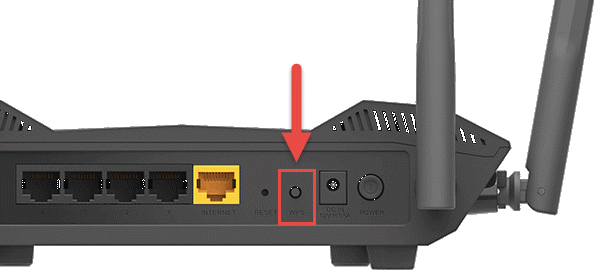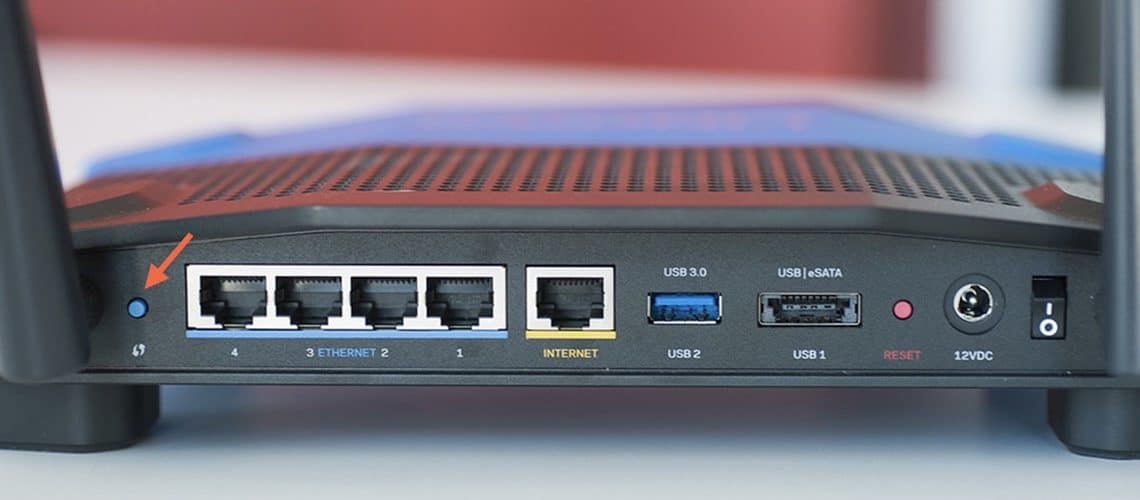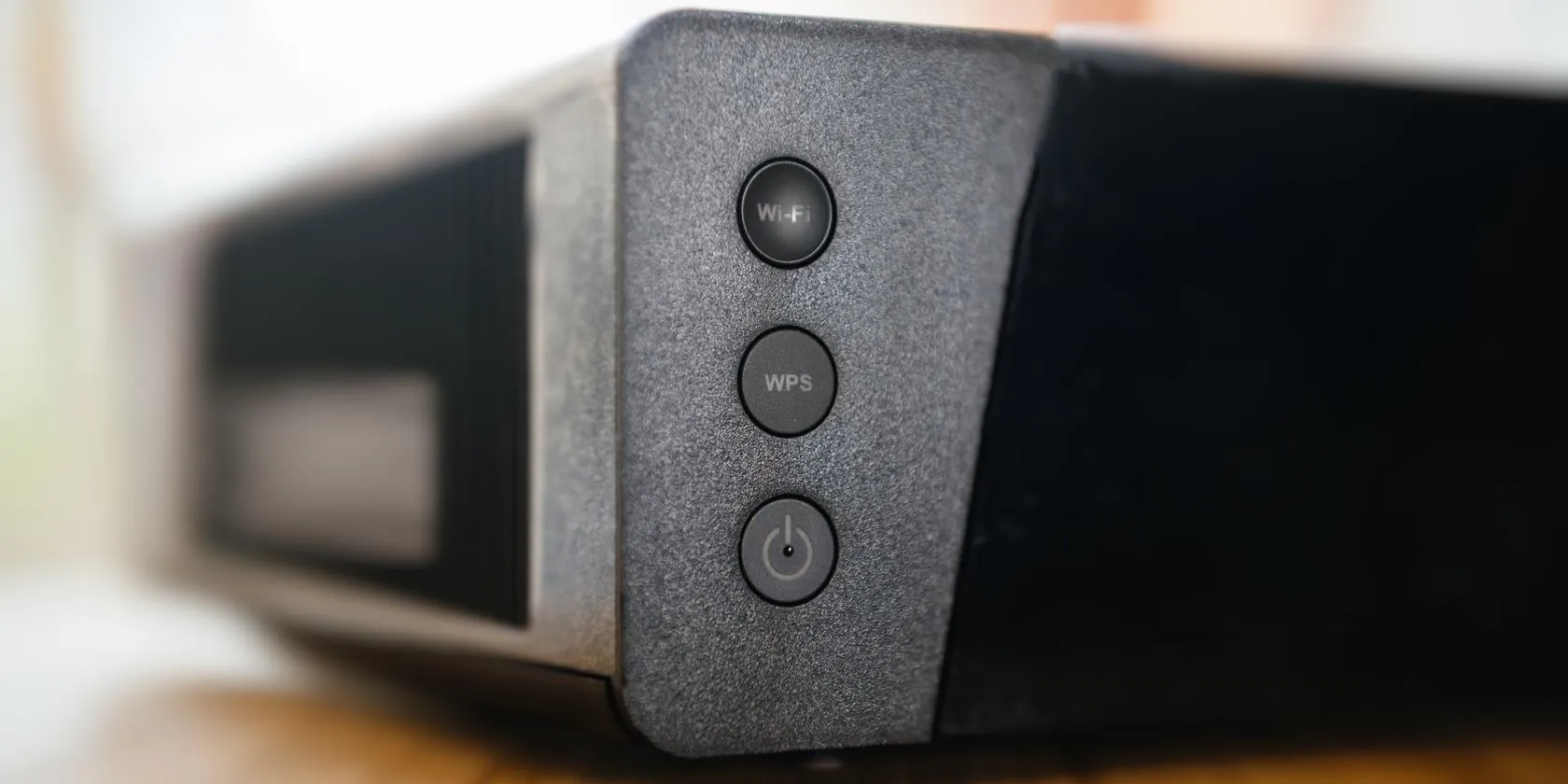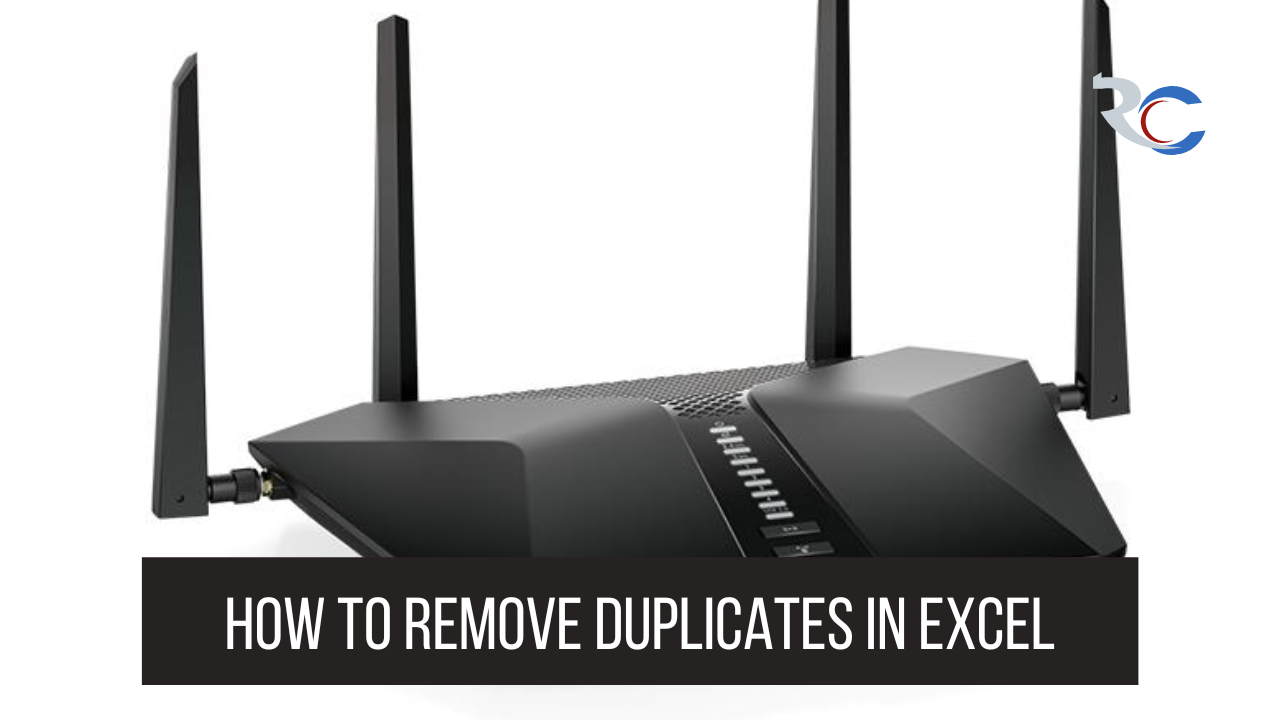A “WPS” button, which may look a little out of place, may be found on most routers if you poke around for a while. But what exactly is this unknown button, and what happens if you push it?
Let’s examine the meaning of “WPS,” the function of the button it activates, and how it’s used.
“What Is WPS?”
Wi-Fi Protected Setup, or WPS for short, simplifies the process of connecting devices to your wireless router.
Anyone who has ever connected a device to a router knows the misery of using the factory-default password. These are typically printed in the router’s manual, and they feature a long string of letters, numbers, and symbols.
The router has a complicated default password to prevent unauthorized access by hackers. If the password is weak, like “admin,” a hacker can easily break in. If you want to strengthen the security of your network, you should follow the old advice from before randomly generated default passwords were the norm: change the passwords.
It’s pretty uncommon for people to never update their router’s default password because it’s so complicated and secure. That means anyone who reads your Wi-Fi password on the back can use it to connect to your network.
You have more problems than someone streaming Netflix over your data plan if someone is breaking into your home to read your router’s password.
If you can safely assume that anyone within touching distance of your router isn’t a bad guy, then why not design a button that performs the same thing? The WPS button serves this purpose.
Also Read: Modem vs Router: What is The Difference Between a Modem and a Router? [Detailed Comparison]
Can You Please Explain What The WPS Button Does?

To connect a device to a router via the WPS button, it is assumed that the user is within touching distance of the router and has permission to do so. So, to connect a device without entering a lengthy password, just press the button.
When activated, the router actively seeks out devices that are compatible with itself. A WPS-enabled router will immediately pair with any devices trying to connect to it. The router will cease trying to find a connection after around two minutes if none has been made.
It’s important to note that not everything is compatible with WPS connections. Some newer devices don’t even support WPS anymore, and older ones won’t even connect to it because they were made before it became popular. The only way to tell if a device supports WPS is to try to connect it to a new router, and if it does, you’ll see a “connect through WPS” option.
What Does My Router’s WPS Button Do?

The design of the WPS button may vary slightly from router to router. On some models, the WPS button is clearly labeled. It needs to be near the far back of the machine.
The WPS symbol, depicted by two arrows pointing in opposite directions within an oval, is used instead on some models. In a way, it resembles the internationally recognized recycling sign, however with fewer sharp corners and a rounder outline.
Some people put “Wi-Fi Protected Setup,” which is just “WPS” typed out in full, next to the button. Regardless of the label, all of the above should function as a standard WPS button.
Also Read: How To Make A QR Code? Make Your First QR Code In 4 Easy Steps! [Complete Guide]
Learn WPS Wi-Fi Network Connection Methods!

A number of Wi-Fi gadgets are incompatible with WPS. Some newer gadgets don’t even bother with WPS, while older systems can’t grasp it because it wasn’t around when they were made.
If your device offers WPS as an option during setup, it is WPS-compatible. It will then prompt you to enter a password or hit the WPS button on your router after you’ve chosen the router you want to connect to.
Keep the setup page open and hit the WPS button on your router if the second choice occurs. Then, your path will start actively seeking out potential new connected gadgets. It should be able to locate yours and automatically connect it to the network.
A change in the router’s password could cause any WPS-connected devices to lose connectivity. Your gadget will now insist that it no longer has valid credentials and refuse to reconnect.
To fix this, simply restore your previous password and try connecting again. Instead, you can tell your device to forget the router and then rejoin via WPS if you prefer not to enter the password every time.
As an added bonus, this piece of advice is useful to bear in mind if you have reason to believe that an unauthorized user has connected to your network using WPS. If someone gains access to your account without your knowledge, all you have to do is change the password.
Could Using WPS Put My Data at Risk?
The location of your router has a significant impact on the security of WPS. Think about the possibility of an intruder gaining access to your router and then utilizing the WPS button to join your network. If that’s the case, you may need to tinker with your router’s configurations and turn off the WPS button.
This is especially true if you don’t anticipate adding any new Wi-Fi-enabled gadgets to your home any time soon. WPS is only helpful for connecting brand-new gadgets to the internet. As soon as you’re done, there’s no point in keeping the button pressed.
Yes, but what about when you have visitors? A dedicated guest network makes it easy for guests to join your home’s wireless network. So, they can get online rapidly while your personal gadgets stay safe inside your home network.
Also Read: HEIC To JPG Converter: A Complete Guide On Converting HEIC File To JPG On iPhone, Mac, & PC!
Simply Push A Button To Link Up
When connecting devices to your router, WPS is a time-saver, but it also introduces security risks. Once you’ve connected everything, disable WPS and set up a separate network for guests to use so that only public information may reach their devices.
If you’re going to the trouble of turning off WPS, you might as well keep your entire wireless network secret. After all, it is far more difficult for a hacker to break into something that is hidden from their view.

